Bathrooms have evolved beyond their functional role into luxurious retreats where homeowners can unwind, rejuvenate, and escape the demands of everyday life. One of the most popular design philosophies that brings a sense of serenity and connection to these intimate spaces is incorporating nature-inspired materials. Whether through the textures, colors, or raw beauty of natural elements, these materials transform a bathroom into a calming sanctuary. And as sustainability becomes a central consideration in design, using eco-friendly, nature-based materials not only enhances the space’s aesthetic but also promotes environmental consciousness.
In this article, we explore how to incorporate nature-inspired materials into your bathroom renovation, creating a soothing, earth-conscious environment that fosters well-being and style.
1. Stone: A Timeless Connection to Earth
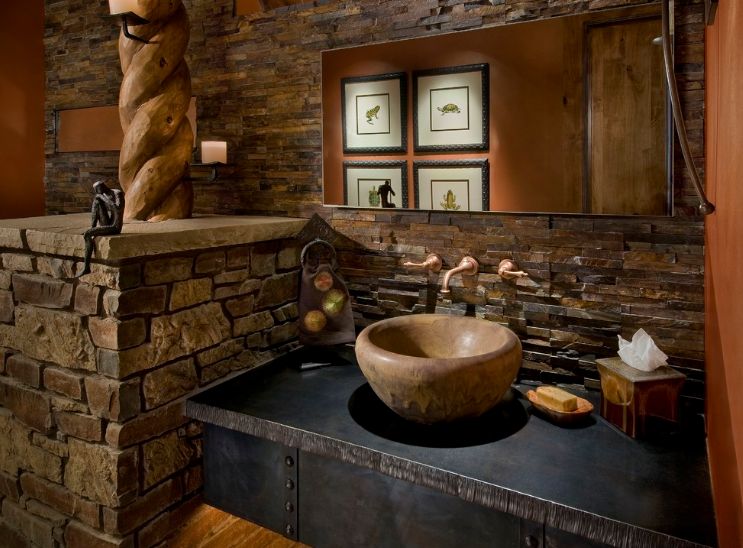
Stone has been a staple in luxury design for centuries, and for good reason. Its enduring beauty and connection to the natural world bring elegance and texture to any space, especially in the bathroom.
Types of Stone to Consider:
- Marble: Known for its luxurious veining and timeless appeal, marble can be used for countertops, flooring, or even as wall cladding. Opting for sustainable marble sources or repurposed marble can reduce the environmental impact.
- Soapstone: A softer, more subtle stone, soapstone is perfect for sinks, countertops, and vanities. It’s non-porous, which makes it ideal for the bathroom environment, and it ages beautifully with use.
- Limestone: With its warm, earthy tones, limestone gives the bathroom a grounded, organic feel. It’s often used for flooring or wall surfaces, but it’s important to seal it to prevent moisture damage.
- Slate: A non-porous stone that comes in various shades of gray, slate is a robust option for both flooring and walls. It’s durable, slip-resistant, and adds a touch of elegance to modern, minimalist bathrooms.
Why Stone?
The natural veining and textures of stone make each piece unique, transforming an otherwise standard bathroom into a one-of-a-kind, luxurious space. Furthermore, stone materials are incredibly durable, meaning they will last for decades with minimal maintenance, making them a wise investment from both a design and environmental standpoint.
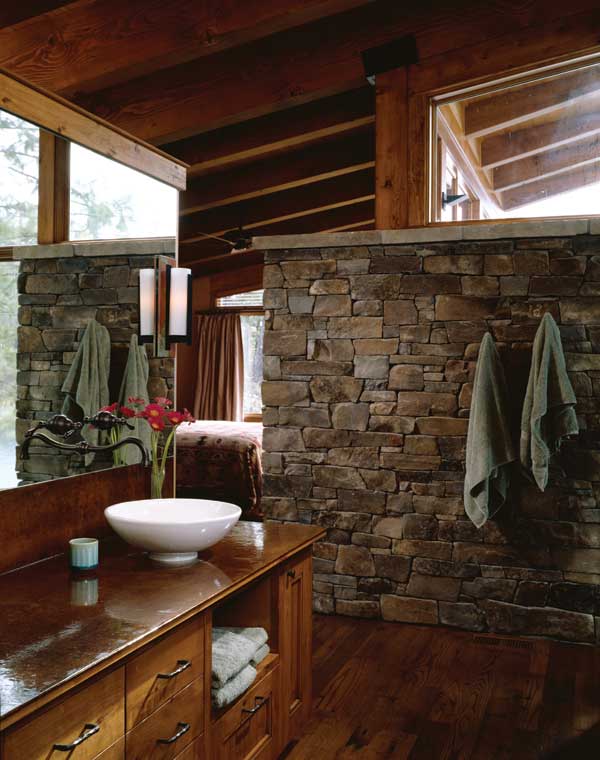
2. Wood: Warmth and Sustainability in the Bathroom
While wood may not be the first material that comes to mind for bathroom spaces, its use can bring warmth, texture, and an organic touch that feels both sophisticated and tranquil. When chosen carefully, wood can elevate a bathroom design with natural charm and eco-conscious appeal.
Best Wood Types for Bathrooms:
- Teak: Teak is the gold standard for bathroom wood. Its natural oils make it water-resistant, durable, and resistant to decay. Teak works beautifully in wet areas like shower benches, floors, and cabinetry.
- Cedar: Known for its pleasant aroma and natural resistance to moisture, cedar is a great option for vanity units, shelving, and accent pieces. It’s an eco-friendly choice, as it grows quickly and can be sustainably sourced.
- Bamboo: Bamboo is a fast-growing, renewable resource, making it an excellent choice for eco-conscious homeowners. It’s used for everything from bathroom flooring to accessories like soap dishes, towels, and storage. Bamboo’s inherent moisture resistance makes it suitable for bathroom applications.
Why Wood?
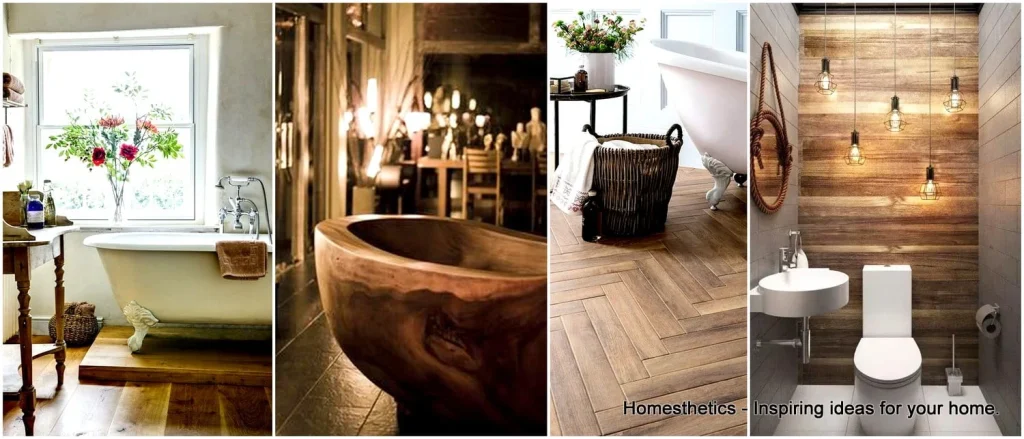
Wood adds a sense of calm to a space, bringing nature’s warmth and beauty indoors. Its rich texture contrasts beautifully with the more polished finishes of stone or tile, creating a balanced and serene environment. When sourced responsibly, wood can be a sustainable, eco-friendly option that doesn’t compromise on luxury.
3. Bamboo: The Eco-Friendly Superstar
Bamboo has rapidly become a favorite in sustainable design due to its fast growth rate and minimal environmental impact. It’s particularly popular in bathroom renovations because of its versatility, aesthetic appeal, and water resistance.
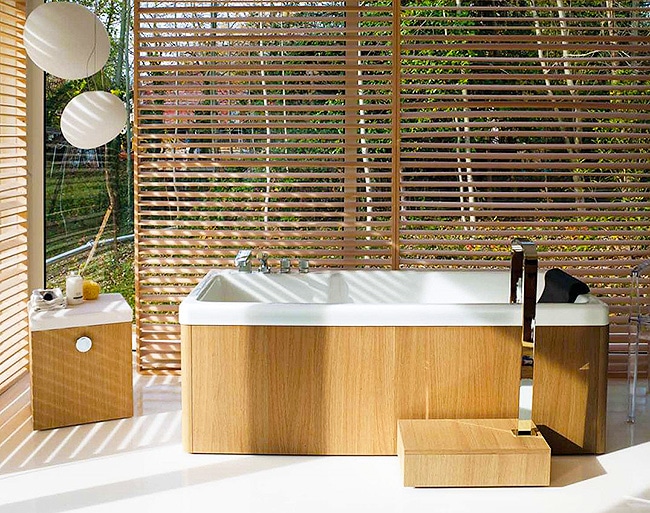
Uses of Bamboo in the Bathroom:
- Bamboo Flooring: With its durable, water-resistant properties, bamboo flooring offers a natural, elegant look that complements both traditional and contemporary bathroom styles. It’s a perfect eco-friendly alternative to hardwood flooring.
- Bamboo Vanities and Accessories: Bamboo can be used for cabinets, shelving, and even mirrors. Its sleek texture and natural grain make it an excellent material for creating spa-like spaces.
- Bamboo Towels and Linens: Bamboo fabric is soft, absorbent, and naturally anti-bacterial, making it a perfect choice for bath towels, bath mats, and shower curtains.
Why Bamboo?
Bamboo is a sustainable material that grows without the need for fertilizers or pesticides, making it one of the most eco-friendly materials available. It’s durable and stylish, providing a natural aesthetic that harmonizes perfectly with other organic materials.
4. Clay and Terracotta: Organic, Earthy Charm
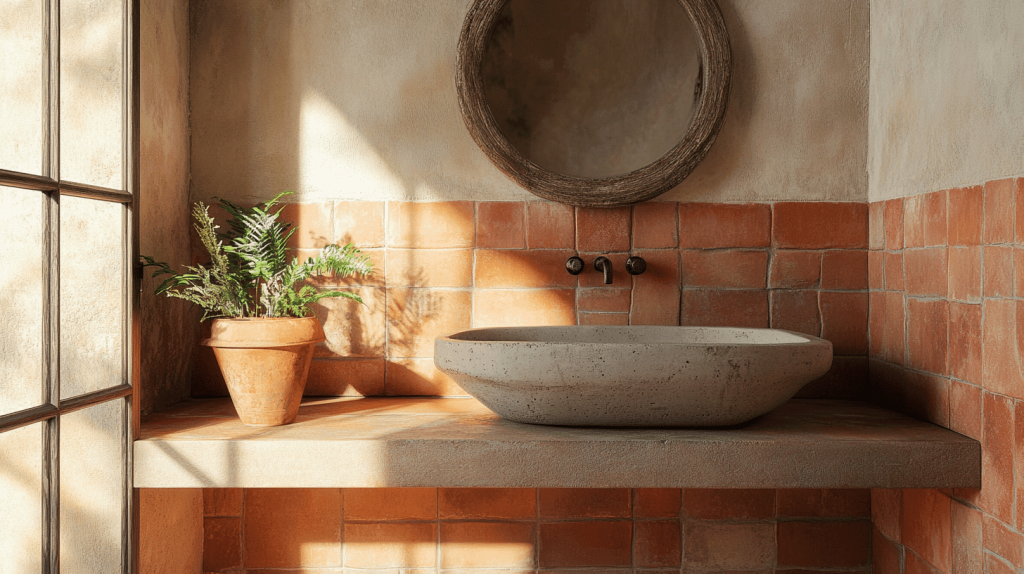
If you want to evoke the rustic charm of nature, clay and terracotta are materials that have been used for centuries and are still incredibly relevant in today’s design world. They bring warmth, color, and texture into a space, and when paired with modern elements, they can create a beautifully balanced environment.
How to Incorporate Clay and Terracotta:
- Terracotta Tiles: Known for their earthy tones and handmade quality, terracotta tiles are perfect for flooring, backsplashes, or even shower walls. Their warm hues lend an inviting, rustic feel to the bathroom.
- Clay Sinks and Vessels: Clay basins and pottery bring an artisan touch to the bathroom. Their organic shape and matte texture create a tactile, welcoming atmosphere.
- Clay Accessories: From handmade soap dishes to terracotta planters, small clay accents add an artisanal feel to the bathroom.
Why Clay and Terracotta?
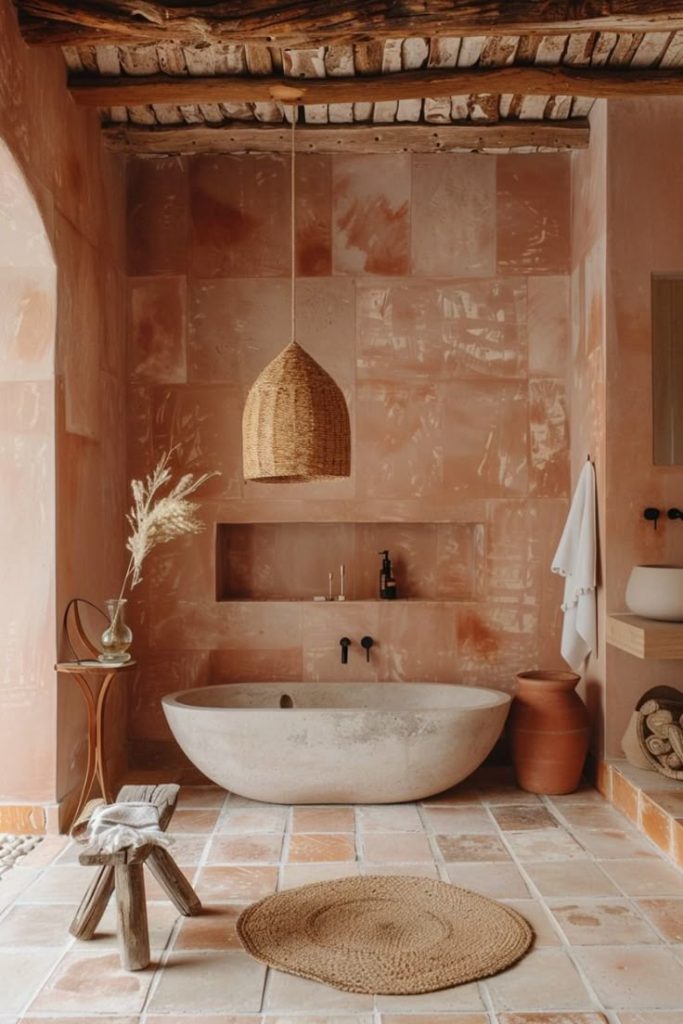
Both materials bring a deep connection to the earth and evoke a sense of warmth and groundedness. They help create a spa-like environment by offering natural textures and colors that relax the mind. They also age beautifully, developing a patina over time that enhances their character.
5. Recycled and Upcycled Materials: Eco-Friendly Luxury
For the environmentally conscious, recycled and upcycled materials offer a fantastic opportunity to combine sustainability with style. These materials often come from discarded or surplus items that are repurposed for a new use, adding an element of creativity and uniqueness to the bathroom design.
Examples of Recycled Materials in Bathrooms:
- Recycled Glass Tiles: These tiles can be made from post-consumer glass bottles or other recycled glass products. Available in an array of colors and finishes, they create a beautiful backsplash or accent wall in the bathroom.
- Upcycled Wood: Salvaged wood from old buildings or furniture can be refinished and used for vanities, shelving, and trim. This not only helps preserve trees but also imbues the bathroom with a sense of history and character.
- Recycled Concrete: For a modern, industrial aesthetic, recycled concrete can be used for countertops, sinks, and flooring. It’s durable and offers a striking, minimalist look.
Why Recycled Materials?
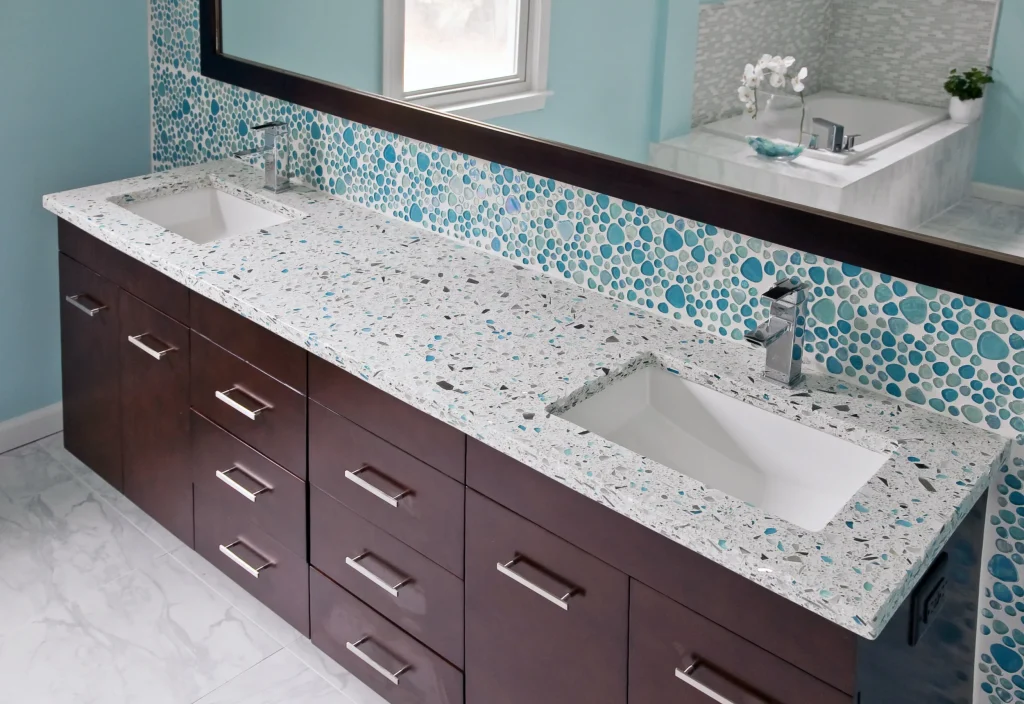
Incorporating recycled or upcycled materials into your bathroom renovation not only helps reduce waste but also allows you to create a space that’s both environmentally conscious and unique. These materials often have a story behind them, adding character and depth to the design.
6. Incorporating Natural Light and Outdoor Views
Finally, no renovation focused on nature-inspired materials is complete without considering the role of natural light and views. Connecting the interior of your bathroom with the outdoors creates a more immersive experience with nature.
How to Bring Nature Inside:
- Skylights: A well-placed skylight floods the bathroom with natural light, creating a bright, airy atmosphere.
- Large Windows: If possible, consider adding larger windows that open up to a garden or outdoor space. This connection to nature helps blur the lines between inside and outside, enhancing the overall tranquility of the space.
- Glass Shower Walls: Transparent or frosted glass shower walls allow for more light to flow through the space, giving the illusion of a larger, more open bathroom.
Why Natural Light?
Natural light has a profound impact on our well-being, improving mood and energy levels. A bathroom bathed in natural light feels more expansive and calming, enhancing the effect of the natural materials used in the space.
Conclusion: A Bathroom that Breathes with Nature
Incorporating nature-inspired materials into your bathroom renovation is not just about aesthetics—it’s about creating a space that enhances your well-being and connects you with the natural world. From luxurious stone and wood to eco-friendly bamboo and upcycled materials, there are numerous ways to incorporate these organic elements while remaining environmentally conscious.
By using sustainable, nature-inspired materials, you create a bathroom that isn’t just beautiful, but also a peaceful retreat that supports both the environment and your own wellness. Whether it’s the earthy texture of terracotta, the warmth of wood, or the timeless elegance of stone, nature offers an endless variety of options to make your bathroom a serene, eco-friendly sanctuary.
